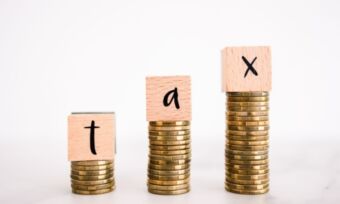How much super do you need to retire on $50,000, $70,000, $90,000 or $100,000 a year?
“How much do I need to retire on $100,000 a year?” Well, Canstar has crunched the numbers for a variety of salaries, including $50,000, $70,000, $90,000 and $100,000, to help give you a clearer estimate.

“How much do I need to retire on $100,000 a year?” Well, Canstar has crunched the numbers for a variety of salaries, including $50,000, $70,000, $90,000 and $100,000, to help give you a clearer estimate.
“How much money do I need to retire?”. It’s one of the most common questions I hear. I wish I could give you a simple answer, but the truth is there is no magic number that will suit everyone.
You may have heard you need $1 million or that you should have enough savings to provide an income equal to 70%-80% of your final salary. Then there is the Association of Superannuation Funds of Australia (ASFA) Retirement Standard which benchmarks the annual budget needed by Australians to fund a comfortable standard of living in their post-work years. It estimates that a couple hoping for a ‘comfortable’ retirement will need $690,000 in savings and a single person will need $595,000. Super Consumers Australia has also run the numbers and estimates that a couple with a medium level of spending will need $425,000 and a single person will need $317,000.
These figures can give you a rough guide but to work out how much you really need it’s important to do some number crunching for yourself.
How to work out how much money you need for retirement
There are three important factors to consider when calculating how much you will need for your retirement: the annual cost of your lifestyle in retirement, when you want to retire and your life expectancy.
The annual cost of your lifestyle in retirement
It’s important to think about the type of life you want to live in retirement. If you plan to travel the world and enjoy fine dining, you’ll need more than someone who is happy to have a local holiday every few years and prefers the local club to fancy restaurants. And if you’re renting in retirement you’ll need more cash than someone who owns their own home.
So, sit down and work on a retirement budget. Start with the basics such as food, clothing, transport and utilities and then decide the nice-to-haves like dining out, holidays and hobbies. The final factor to look at is the luxuries. Would you like a caravan, for example?
When you want to retire
The earlier you hope to retire the more money you’ll need to fund your retirement. There’s no set retirement age in Australia. Some people plan to retire when they can access their super, others aim for when they can start receiving the Age Pension and there is a growing group who want to retire early known as the Financial Independence and Retire Early (FIRE) movement. The decision is up to you but working for longer—even on a part-time basis—can help you retire stronger.
Your life expectancy
This one is a little tricky to predict. Broadly speaking, women today can expect to live to 85 and men until 81, according to the Australian Bureau of Statistics (ABS). Of course, these are just estimates and your life expectancy will depend on your family’s health history and your health and lifestyle. One way to predict your life expectancy is with an online calculator such as The Death Clock or My Longevity.
Your life expectancy is important because it will shape how much time you’ll spend in retirement and therefore how much you’re going to need in savings.
Add this all up
The final step to knowing how much you need for retirement is to bring together the three factors.
Let’s say, for instance, that you do the sums and find your retirement lifestyle will cost $40,000 a year. If you plan to retire at 65 and have a life expectancy of about 85, you could be looking at 20 years in retirement. On that basis, you’ll need around $800,000 to fund your lifestyle.
 Online rollover
Online rollover
 Online application
Online application
 Online rollover
Online rollover
 Online application
Online application
 Online rollover
Online rollover
 Online application
Online application
 Online rollover
Online rollover
 Online application
Online application
 Online rollover
Online rollover
 Online application
Online application
Canstar may earn a fee for referrals from its website tables and from Promotion or Sponsorship of certain products. Fees payable by product providers for referrals and Sponsorship or Promotion may vary between providers, website position, and revenue model. Sponsorship or Promotion fees may be higher than referral fees.
On our ratings results, comparison tables and some other advertising, we may provide links to third party websites. The primary purpose of these links is to help consumers continue their journey from the ‘research phase’ to the ‘purchasing’ phase. If customers purchase a product after clicking a certain link, Canstar may be paid a commission or fee by the referral partner. Where products are displayed in a comparison table, the display order is not influenced by commercial arrangements and the display sort order is disclosed at the top of the table.
Sponsored or Promoted products are clearly disclosed as such on the website page. They may appear in a number of areas of the website, such as in comparison tables, on hub pages, and in articles. The table position of the Sponsored or Promoted product does not indicate any ranking or rating by Canstar.
Sponsored or Promoted products table
- Sponsored or promoted products that are in a table separate to the comparison tables in this article are displayed from lowest to highest annual cost.
- Performance figures shown for Sponsored or Promoted products reflect net investment performance, i.e. net of investment tax, investment management fees and the applicable administration fees based on an account balance of $50,000. To learn more about performance information, click here.
- Please note that all information about performance returns is historical. Past performance should not be relied upon as an indicator of future performance; unit prices and the value of your investment may fall as well as rise.
How much super do you need to retire on $50,000, $70,000, $90,000 or $100,000 a year?
Canstar Research has crunched the numbers to show you how much you’d need in super based on various annual incomes and when you plan to retire. All of these hypothetical scenarios assume you need the money to last until you’re 85.
As the table below shows, if your goal is to retire on $70,000 a year at age 60, you’ll need $1,593,028 but if you’re happy to wait until you’re 67 you’ll need $1,174,327—about $418,000 less.
If you’re hoping to retire at age 60 with an annual income of $100,000, you’ll need a whopping $2,275,755!
Superannuation balances required for various retirement ages and annual income streams
← Mobile/tablet users, scroll sideways to view full table →
| Annual Income* |
Retirement Age |
||
|---|---|---|---|
| 50 Years | 60 Years | 67 Years | |
| Balance at Retirement Required |
|||
| $50,000 | $1,540,816 | $1,137,877 | $838,805 |
| $70,000 | $2,157,143 | $1,593,028 | $1,174,327 |
| $90,000 | $2,773,469 | $2,048,179 | $1,509,850 |
| $100,000 | $3,081,633 | $2,275,755 | $1,677,611 |
Source: www.canstar.com.au – 23/01/2025. Scenario begins at the start of the 2024-25 financial year and is based on a 30 year old with starting gross annual income of $83,249 per ABS Characteristics of Employment (median full-time earnings, August 2024 release), growing 2.5% annually per RBA Target Inflation. Employer contributions are assumed to be taxed at 15%. SG contribution amounts per Government announced rates assumed to be paid into the superannuation account quarterly. Net returns assumed to be 6.58% p.a. based on the average 5 year return of balanced investment options on Canstar’s database available for a 30 year old (returns effective to end of July 2024). Balanced investment option considered as having a growth asset allocation between 60%-79%. Account type changes from accumulating to pension at retirement age and uses the net return rate of 3.11% based on the average 5 year return of conservative investment options. Conservative investment option considered as having a growth asset allocation between 10%-39%. Average life and TPD insurance premiums of $150.80 and $103.33 respectively (increasing with RBA target inflation of 2.5% each year) are assumed charged at the end of each financial year, based on products in Canstar’s database for a 35 year old. Insurance premiums are assumed to end at the retirement age. Annual retirement income stream and balance at retirement are shown in “today’s dollars”, i.e. they have been adjusted for inflation. *Income stream is assumed to be paid monthly until age 85. Please note all information on income, net returns and insurance premiums are used for illustration purposes only. Actual returns and the value of your investment may fall as well as rise from year to year; this example does not take such variation into account. Past performance is not a reliable indicator of future performance.
Are you on track to reach your goal amount?
It can be difficult to know whether you’re on track to reach your target amount. To give you an idea, Canstar has worked out how much a 30-year-old would need to have in their super now to be on track to achieve their target.
As the table below shows, a 30-year-old who is hoping to retire on $70,000 a year at age 60 should have $348,578 in their super right now if they want to reach their target. If you’re older, then you would need to have a higher super balance in order to reach your goal.
Current superannuation balances required at 30 years old for various retirement ages and annual income streams
← Mobile/tablet users, scroll sideways to view full table →
| Annual Income* |
Retirement Age |
||
|---|---|---|---|
| 50 Years | 60 Years | 67 Years | |
| Balance Required at 30 Years Old |
|||
| $50,000 | $591,108 | $207,745 | $37,607 |
| $70,000 | $872,868 | $348,578 | $116,604 |
| $90,000 | $1,154,629 | $489,412 | $195,601 |
| $100,000 | $1,295,509 | $559,829 | $235,099 |
Source: www.canstar.com.au – 23/01/2025. Scenario begins at the start of the 2024-25 financial year and is based on a 30 year old with starting gross annual income of $83,249 per ABS Characteristics of Employment (median full-time earnings, August 2024 release), growing 2.5% annually per RBA Target Inflation. Employer contributions are assumed to be taxed at 15%. SG contribution amounts per Government announced rates assumed to be paid into the superannuation account quarterly. Net returns assumed to be 6.58% p.a. based on the average 5 year return of balanced investment options on Canstar’s database available for a 30 year old (returns effective to end of July 2024). Balanced investment option considered as having a growth asset allocation between 60%-79%. Account type changes from accumulating to pension at retirement age and uses the net return rate of 3.11% based on the average 5 year return of conservative investment options. Conservative investment option considered as having a growth asset allocation between 10%-39%. Average life and TPD insurance premiums of $150.80 and $103.33 respectively (increasing with RBA target inflation of 2.5% each year) are assumed charged at the end of each financial year, based on products in Canstar’s database for a 35 year old. Insurance premiums are assumed to end at the retirement age. Annual retirement income stream and balance at retirement are shown in “today’s dollars”, i.e. they have been adjusted for inflation. *Income stream is assumed to be paid monthly until age 85. Please note all information on income, net returns and insurance premiums are used for illustration purposes only. Actual returns and the value of your investment may fall as well as rise from year to year; this example does not take such variation into account. Past performance is not a reliable indicator of future performance.
Related: How much super should I have at my age?
How much super should I have at 40?
According to Canstar Research and the ASFA’s Retirement Standards, a 40-year-old would need a current superannuation balance of $156,000 in order to be able to comfortably retire at age 67. This is based on a comfortable retirement balance of $595,000, assuming future pre-tax wage income of around $65,000 where upon retirement a retiree draws down all their capital and receives a partial Age Pension.
What if you’re not on track to reach your goal?
These numbers can seem quite overwhelming. If you think you might be falling behind there are a number of things you can do to give your super a boost:
- Make additional contributions to your super: Even small amounts can make a big difference to your balance over the long term. Let’s say, for example, you’re 30, earn $80,000 and have a super balance of $50,000. Make no extra contributions and you’d have $596,301 at age 67, according to the Australian Government’s MoneySmart Superannuation retirement calculator. By salary sacrificing just $20 a week and you’d have $649,446 in your super fund when you retire—over $53,000 more.
- Check out super related apps and websites: There are a number of apps and sites, like Boost Your Super and Grow My Money, that provide cashbacks towards your super when you shop and others that round up and add a percentage of your spending to your super. These may be worth a look as they can be a pain-free way to boost your super.
- Make sure you know where your super is: There was just under $17.8 billion in lost super waiting to be claimed as at 30 June 2024, according to the Australian Taxation Office (ATO). It may be easier than you think to find out if some of that lost super belongs to you.
- Give your super fund a health check: This includes looking at how your fund has performed over the long term compared with other similar options and making sure the fees you’re paying aren’t too high. It’s also a good idea to check where your money is invested to make sure it’s the right option for you.
Compare Best Performing Super Funds
What if you don’t have enough money when you are closer to retirement?
If you’re nearing retirement and your super is falling short, there are a number of things you may be able to do. These include:
- Work for longer where possible, even if it’s part time or casually.
- Revisit your retirement budget—are there things you can cut back on?
- Check if you are eligible for the Age Pension. Many retirees rely on a full or part Age Pension to fund their retirement.
- Consider downsizing your home to free up some extra cash.
Transfer balance cap
There is also currently a transfer balance cap on the amount of money you can shift into a superannuation pension account or income stream when you retire. At the time of writing the cap is set at $1.9 million. This cap applies to individuals, so a couple could have up to $3.8 million between them, as long as it resides in separate accounts. Excess superannuation amounts will need to be kept in a regular super accumulation account or somewhere outside super, such as a bank account, where its earnings will be subject to taxation. How this transfer balance cap affects you and your finances may be complex, so it can often be worth seeking professional advice before making any decisions.
Compare Superannuation with Canstar
The table below displays some of the superannuation funds currently available on Canstar’s database for Australians aged 30 to 39 with a super balance of up to $55,000. The results shown are sorted by Star Rating (highest to lowest) and then by 5 year return (highest to lowest). Performance figures shown reflect net investment performance, i.e. net of investment tax, investment management fees and the applicable administration fees based on an account balance of $50,000. To learn more about performance information, click here. Consider the Target Market Determination (TMD) before making a purchase decision. Contact the product issuer directly for a copy of the TMD. Use Canstar’s superannuation comparison selector to view a wider range of super funds. Canstar may earn a fee for referrals.
 Online rollover
Online rollover
 Online application
Online application
 Online rollover
Online rollover
 Online application
Online application
 Online rollover
Online rollover
 Online application
Online application
 Online rollover
Online rollover
 Online application
Online application
- Performance, fee and other information displayed in the table has been updated from time to time since the rating date and may not reflect the products as rated.
- The performance and fee information shown in the table is for the investment option used by Canstar in rating of the superannuation product.
- Performance information shown is for the historical periods up to 31/05/2024 and investment options noted in the table information.
- Performance figures shown reflect net investment performance, i.e. net of investment tax, investment management fees and the applicable administration fees based on an account balance of $50,000. To learn more about performance information, click here.
- Performance data may not be available for some products. This is indicated in the tables by a note referring the user to the product provider, or by no performance information being shown.
- Please note that all information about performance returns is historical. Past performance should not be relied upon as an indicator of future performance; unit prices and the value of your investment may fall as well as rise.
- Any advice on this page is general and has not taken into account your objectives, financial situation or needs. Consider whether this general financial advice is right for your personal circumstances. You may need financial advice from a qualified adviser. Canstar is not providing a recommendation for your individual circumstances. See our Detailed Disclosure.
- Not all superannuation funds in the market are listed, and the list above may not include all features relevant to you. Canstar is not providing a recommendation for your individual circumstances.
- Canstar may earn a fee for referrals from its website tables, and from Sponsorship or Promotion of certain products. Fees payable by product providers for referrals and Sponsorship or Promotion may vary between providers, website position, and revenue model. Sponsorship or Promotion fees may be higher than referral fees. Sponsored or Promotion products are clearly disclosed as such on website pages. They may appear in a number of areas of the website such as in comparison tables, on hub pages and in articles. Sponsored or Promotion products may be displayed in a fixed position in a table, regardless of the product’s rating, price or other attributes. The table position of a Sponsored or Promoted product does not indicate any ranking or rating by Canstar. For more information please see How We Get Paid.
- Click here for additional important notes and liability disclaimer.
Performance and Investment Allocation Differences
- Fee, performance and asset allocation information shown in the table above have been determined according to the investment profile in the Canstar Superannuation Star Ratings methodology.
- Some providers use different age groups for their investment profiles which may result in you being offered or being eligible for a different product to what is displayed in the table. See here for more details.
- Australian Retirement Trust Super Savings’ allocation of funds for investors aged 55-99 differ from Canstar’s methodology – see details here.
- The Australian Retirement Trust Super Savings (formerly Sunsuper for Life) product may appear in the table multiple times. While you will not be offered any single investment option, this is to take into account the different combinations of investment options Australian Retirement Trust may apply to your account based on your age. For more detail in relation to the Australian Retirement Trust (formerly SunSuper for Life) product please refer to the PDS issued by Australian Retirement Trust for this product.
- Investment profiles applied initially may change over time in line with an investor’s age. See the provider’s Product Disclosure Statement and TMD and in particular applicable age groups for more information about how providers determine their investment profiles.
Additional reporting by Nick Whiting.
Cover image source: Day Of Victory Studio/Shutterstock.com
- How to work out how much money you need for retirement
- How much super do you need to retire on $50,000, $70,000, $90,000 or $100,000 a year?
- Are you on track to reach your goal amount?
- How much super should I have at 40?
- What if you’re not on track to reach your goal?
- What if you don’t have enough money when you are closer to retirement?
- Transfer balance cap
Try our Superannuation comparison tool to instantly compare Canstar expert rated options.






